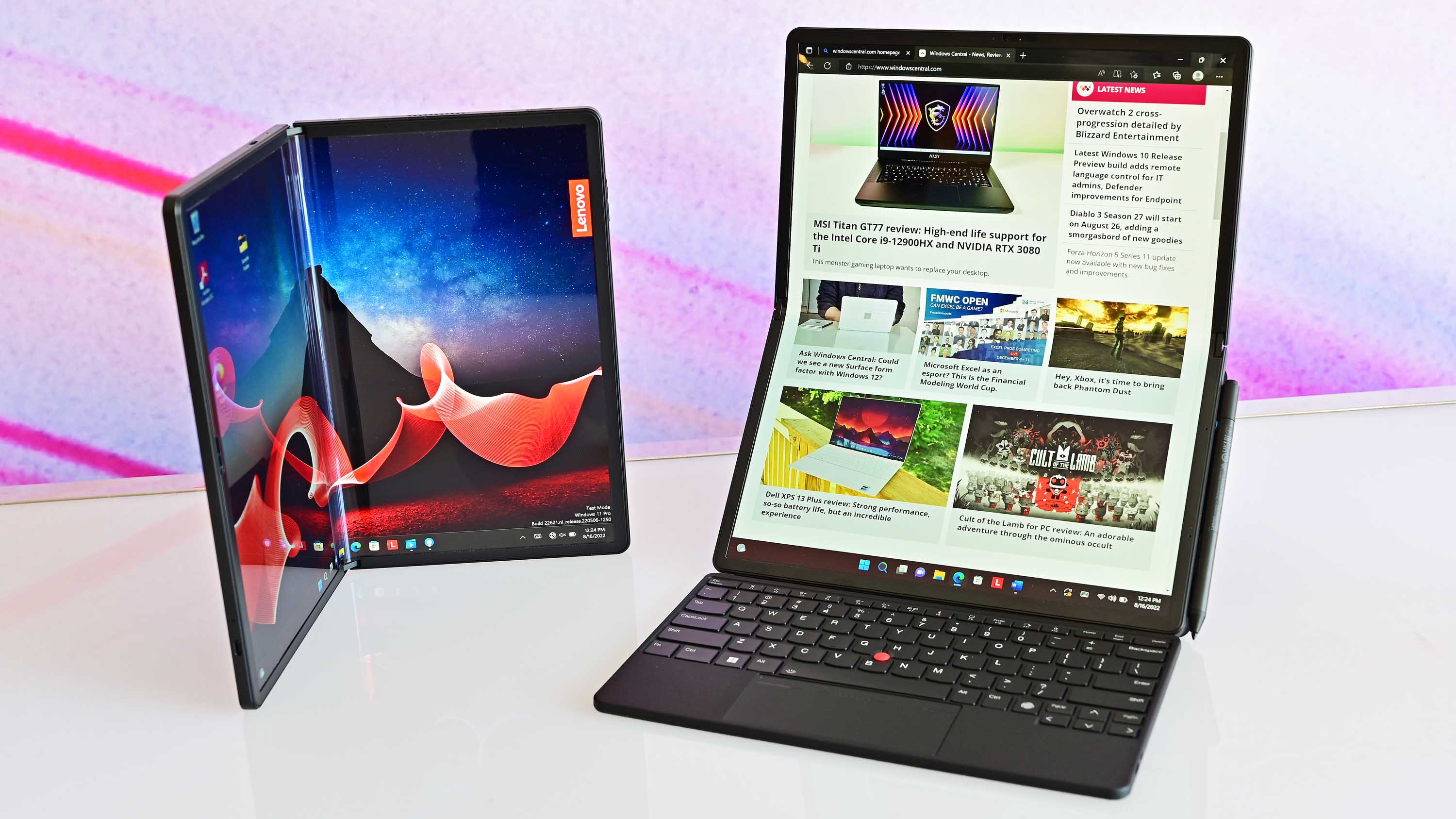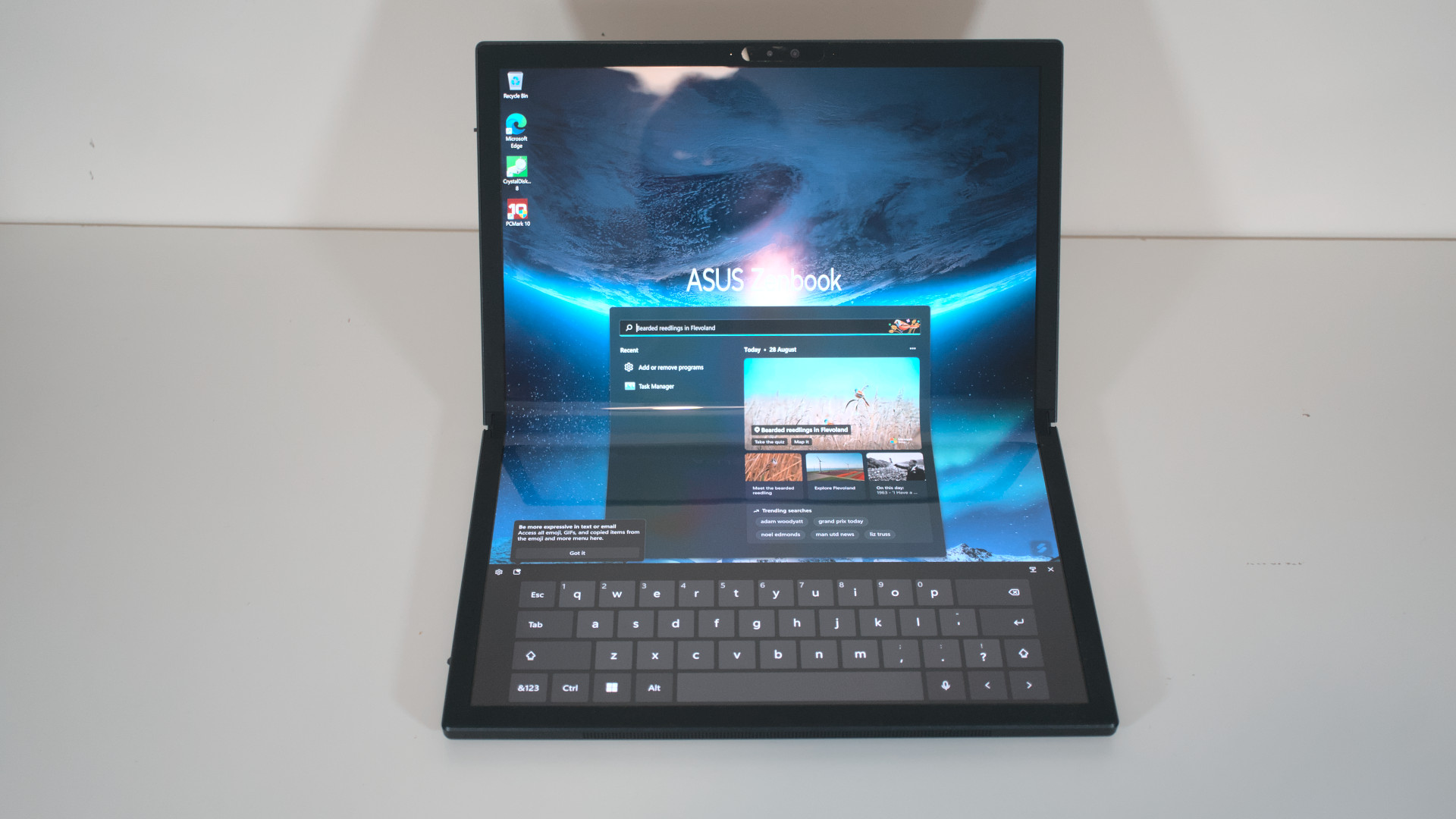Windows 11 is not ready for foldable PCs
Foldable PCs are coming — but Windows still sucks on them.

Last week, two PC manufacturers launched and announced two new foldable PCs running Windows 11, the ASUS ZenBook Fold 17, and the Lenovo ThinkPad X1 Fold 16. While ASUS is shipping its PC as we speak, Lenovo's launches later in 2022. Both are well-built, beautifully designed foldable tablets that can be used as laptops with dedicated keyboard accessories that are magnetic and connect via Bluetooth.
Foldable devices are an up-and-coming form factor in both the smartphone and PC space. Google has been working hard to bring optimizations and improvements to Android that are designed to help support and adapt to the new foldable form factor and the many different postures they bring. That’s what Android 12L, and subsequently Android 13, has been primarily focused on this year.
But over on the PC side, we’ve seen no such effort from Microsoft on Windows 11. These foldable PCs are launching with an OS that does nothing to help make the most of the foldable form factor, meaning OEMs have been left with no choice but to strong arm Windows into bending ways in which it was never designed, using third-party modifications.
Natively, Windows 11 has no idea what to do with the different device postures found on a foldable PC. If you want to use it in laptop mode, Windows 11 doesn’t know to shift the desktop UX to the top half and transform the bottom half into a virtual keyboard and trackpad. If you want to use the tablet in “book mode,” Windows doesn’t know to automatically full-screen and open apps side by side, or automatically split the touch keyboard into thumb mode for easier typing.

Because of this, OEMs are building their own tools and utilities that sit on top of Windows and force Windows into doing these things. It’s a solution to the problem, but it’s not an elegant one. The original Lenovo ThinkPad X1 Fold launched with Windows 10 and used Lenovo’s own software to adapt Windows into its many postures, resulting in a slow and very buggy experience.
It’s unlikely this has changed with Windows 11, as like Windows 10, it doesn’t support foldable postures and is therefore reliant on third-party software essentially forcing it into shape. Take a look at hands-on videos and you can see that the transition when moving these devices into laptop mode is clunky. Unlike Android, it lacks the smooth animations users should expect.
Looking to the future, we can only expect foldable PCs to get crazier, with 360-degree folding screens and other ideas now in development. If so, Windows will need to know to switch off one half of the screen when you fold the device all the way around. If Microsoft never updates Windows to support those devices, OEMs will be forced to add this functionality independently.
All the latest news, reviews, and guides for Windows and Xbox diehards.
We know Microsoft is working on improvements to the Windows UX for tablets. The company is working on a new tablet-optimized taskbar that minimizes when not in use, giving the user more screen space for running apps. There are also new gestures shipping with the latest version of Windows 11 this fall, but these are just steppingstones, and don’t do enough to fully support different foldable postures.
I hope that in the future, Microsoft does add native modes for different foldable postures. The move would go a long way in making the experience feel native and fluid to the device. Google is getting this right, and I assume Apple would be getting this right too, if they were already shipping foldables. For now, Windows is the only OS with foldable devices, where the OS doesn’t natively recognize the different postures possible with a foldable display, and that’s a crying shame.

